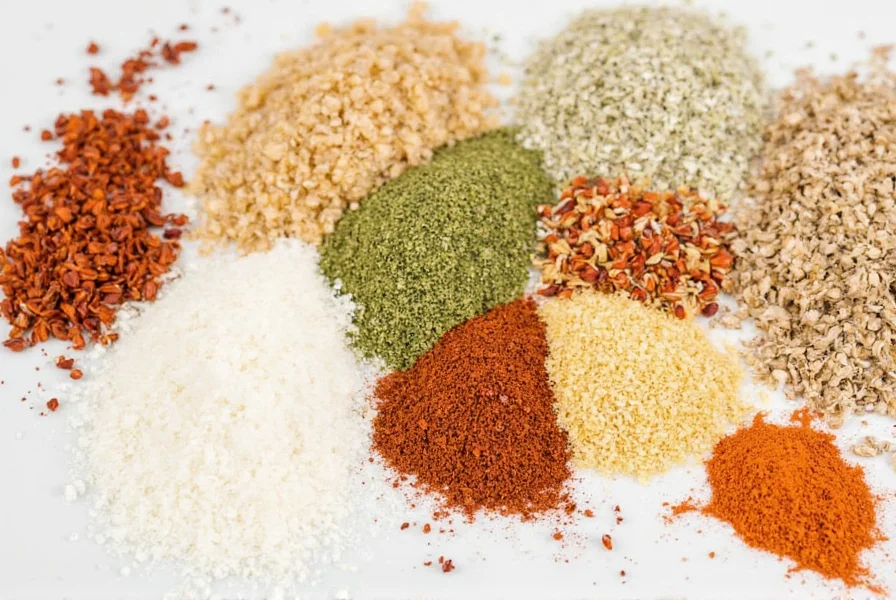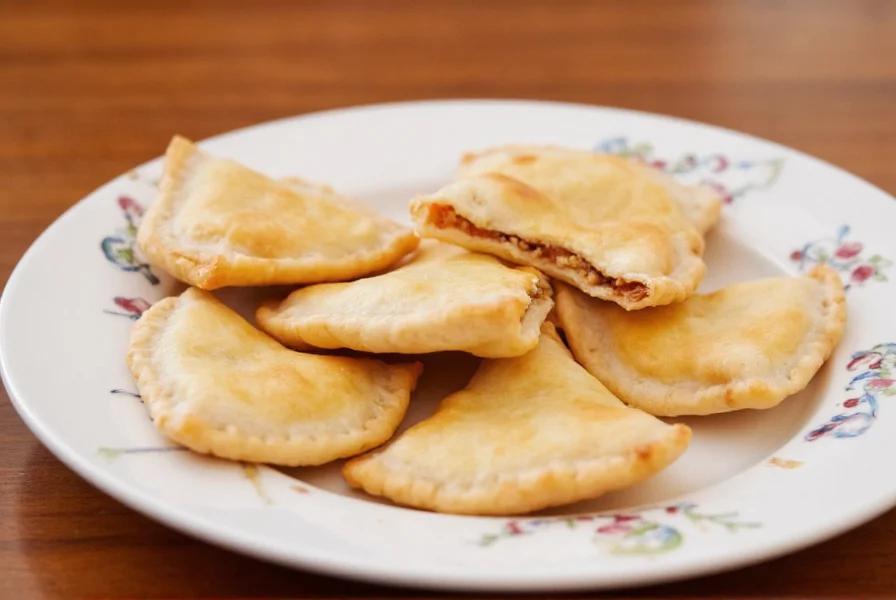Empanadillas: The World's Most Adorable Spice-Filled Snack You Need to Try
When it comes to handheld comfort food with a punch of flavor, few things rival the empanadilla. These little pockets of joy are more than just a snack — they’re a culinary passport to the spice-rich cultures of Latin America, the Caribbean, and beyond.
Table of Contents
- What Are Empanadillas?
- Global Varieties & Regional Spices
- Why They Love a Good Kick of Spice
- How to Make Empanadillas at Home (With Spice Tips)
- Buying Guide: Finding the Best Ingredients for Perfect Empanadillas
- Serving & Pairing Ideas for Maximum Flavor
- Conclusion
What Are Empanadillas?

Think of an empanadilla as a miniaturized cousin of the empanada — a savory pastry filled with spiced meat, seafood, or vegetables, then either fried or baked. Originating from Spanish-speaking regions, especially in the Caribbean and parts of Central and South America, empanadillas are bite-sized marvels that pack bold flavors into small packages.
The name itself is derived from the Spanish verb empanar, meaning “to bread” or “to coat in breadcrumbs.” But what sets empanadillas apart isn’t just their size — it’s the love of spice that often goes into every filling.
Global Varieties & Regional Spices
From Puerto Rico to Colombia to the Philippines, empanadillas come in countless forms. Here’s a quick look at some popular varieties and the spices that define them:
| Region | Filling | Signature Spices | Cooking Method |
|---|---|---|---|
| Puerto Rico | Ground beef, olives, raisins | Sazon, cumin, garlic powder | Fried |
| Colombia | Chicken, potatoes, peas | Annatto, coriander, paprika | Baked |
| Philippines | Beef or chicken with carrots | Onion, soy sauce, black pepper | Fried or steamed |
| Chile | Tuna, hard-boiled egg, olive | Parsley, basil, salt | Baked |
Why They Love a Good Kick of Spice

Spice plays a starring role in empanadilla recipes because it enhances the savory depth of the fillings and balances the richness of dough and oil. Here’s why these little bites crave that extra zing:
- Aroma Magic: Cumin, sazon, and annatto create aromatic layers that awaken your senses before you even take a bite.
- Flavor Balance: Salty, sweet, umami, and spicy all come into play depending on the region and recipe.
- Tradition Meets Innovation: While traditional spice blends remain popular, modern chefs often experiment with chipotle, chili flakes, or even curry powder.
Want to go full spice explorer? Try adding a pinch of smoked paprika or ground cloves to your beef mixture — it adds warmth without overpowering the other flavors.
How to Make Empanadillas at Home (With Spice Tips)
Making empanadillas at home might seem intimidating, but once you get the hang of folding and frying, you’ll wonder why you didn’t start sooner. Here’s a step-by-step guide:
- Make or Buy the Dough: You can use store-bought puff pastry or homemade dough made with flour, baking powder, salt, and butter or shortening.
- Prepare the Filling: Sauté onions, garlic, and spices first to bloom the flavors. Add protein (beef, chicken, or tofu) and simmer until tender.
- Add Texture: Include diced potatoes, olives, or raisins for a surprise element in each bite.
- Assemble: Cut circles from the dough, add a spoonful of filling, fold, and seal tightly with a fork.
- Fry or Bake: For crispy perfection, fry in vegetable oil until golden. Alternatively, brush with egg wash and bake at 375°F (190°C) for 18–20 minutes.
Spice Pro Tip: Let the seasoned filling rest in the fridge for 30 minutes before assembling. This helps the spices meld together beautifully.
Buying Guide: Finding the Best Ingredients for Perfect Empanadillas
If you're not making everything from scratch, choosing the right ingredients can still lead to delicious results. Here’s your ultimate buying guide to spice up your next batch of empanadillas:

Dough Options
| Name | Description | Best For | Price Range |
|---|---|---|---|
| Puff Pastry Sheets | Crispy, flaky, easy to work with | Quick preparation, minimal effort | $2–$4 per box |
| Store-Bought Pie Crust | Denser but sturdy | Easy assembly, thicker texture | $1.50–$3 per crust |
| Empanada Discs (Latin Grocery Stores) | Purpose-made, thin and stretchy | Authentic taste, perfect shape | $3–$6 per pack |
Spice Blends
| Name | Description | Features | Best Used With |
|---|---|---|---|
| Sazon Goya | Yellow-orange spice blend with annatto | Contains MSG; boosts color and flavor | Beef, chicken, rice dishes |
| Adobo Seasoning | Salt-based mix with garlic, oregano, pepper | Can be used as dry rub or seasoning base | All types of meat fillings |
| Curry Powder (for fusion style) | Complex blend of turmeric, coriander, cumin | Brings warmth and exotic flair | Vegan fillings, tofu, chickpeas |
Protein Choices
| Type | Texture | Spice Compatibility | Vegetarian Alternative |
|---|---|---|---|
| Ground Beef | Classic, hearty | Perfect for bold spices like cumin and chili | Textured vegetable protein |
| Shredded Chicken | Soft, moist, flavorful | Works well with mild herbs and citrus | Jackfruit |
| Tuna | Creamy when mixed | Pairs nicely with dill, parsley, lemon zest | Lentils |
Serving & Pairing Ideas for Maximum Flavor
Whether you're serving them as appetizers or a main dish, presentation matters. Here are some fun and tasty ways to enjoy your empanadillas:
- Lime Crema: Mix sour cream with lime juice, cilantro, and a dash of hot sauce for a zesty dip.
- Greek Yogurt Garlic Sauce: A lighter option that cools down spicier fillings.
- Salsa Trio: Offer mild tomato salsa, tangy verde, and smoky chipotle side by side.
- Pair with Tropical Beverages: Think mango smoothies, hibiscus agua fresca, or coconut water.
Conclusion

Empanadillas aren't just snacks — they're tiny bundles of culture, tradition, and spice-packed joy. Whether you're making them for a family dinner, a party, or just because you're craving something savory and spicy, these delightful pastries offer endless possibilities.
So grab your favorite dough, pick a bold blend of spices, and start experimenting. Who knows — you might just discover the next big twist in empanadilla history!










 浙公网安备
33010002000092号
浙公网安备
33010002000092号 浙B2-20120091-4
浙B2-20120091-4